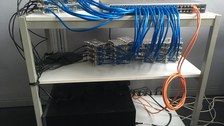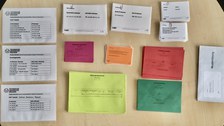Computing practice for the teaching profession: Dr.-Ing. Markus Wutzler (#MW1)
Format
Lecture (asynchronous as video streams) with consultations to clarify questions and explain complex issues again, practical in a comprehensive e-learning format with interactive learning tasks, practical assignments and network training via video conference
Keywords
Compulsory course: Computing practice for the teaching profession (computer science), How does the internet work? – understanding, explaining, applying, video streaming & live conferencing: YouTube / BigBlueButton, interactive tasks & self-assessment: OPAL / ONYX, network training: planning, development and configuration of a real network (tandem work, accompanied via video conference, VPN & SSH); learning software Filius
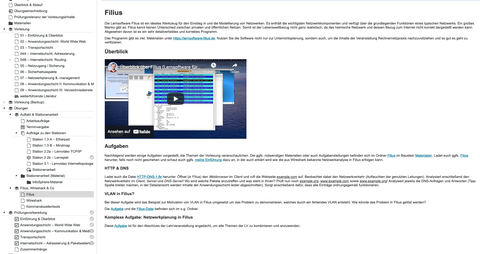
© Markus Wutzler
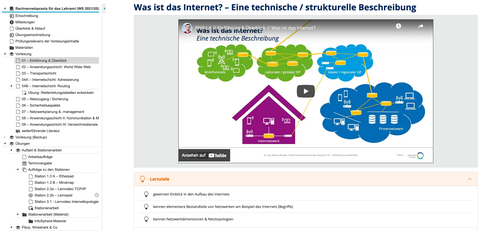
© Markus Wutzler
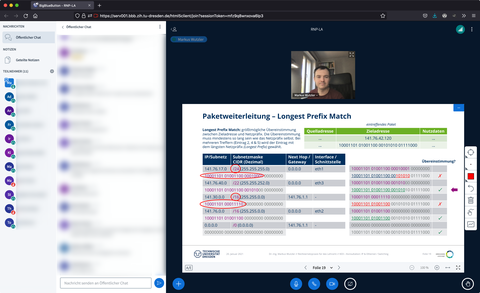
© Markus Wutzler
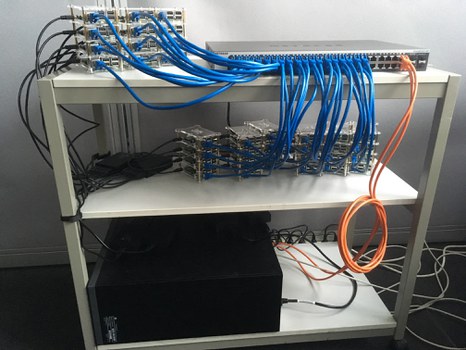
© Markus Wutzler
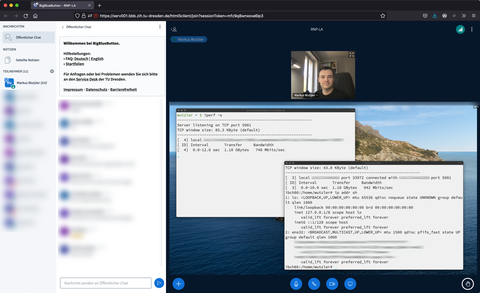
© Markus Wutzler
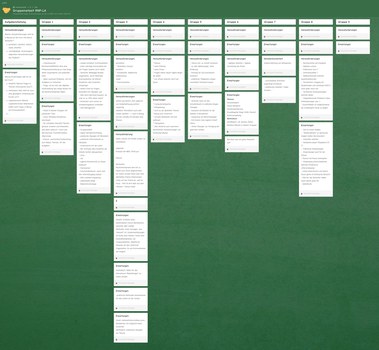
© Markus Wutzler
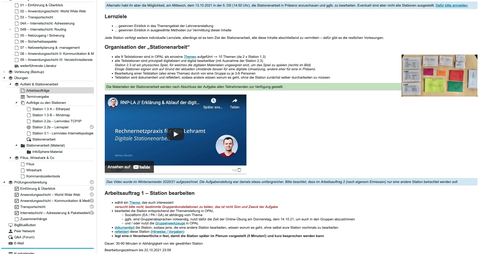
© Markus Wutzler
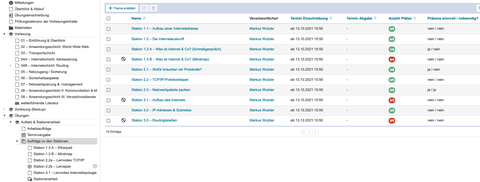
© Markus Wutzler
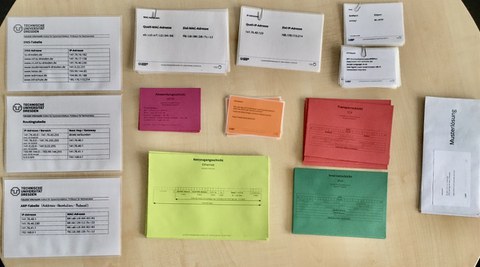
© Markus Wutzler
Description
Computing practice for the teaching profession addresses the central question: How does the internet work? The main content focuses on current internet standards and technologies that are relevant in everyday school life (teaching & school networks). These are combined with school-related practical tasks on the planning, simulation and configuration of networks.
The introduction to the course was group work where the students were able to anonymously document their expectations of the course as well as their challenges and problems in a Padlet, so that I could take these into account during the course. The skepticism about teaching practice exclusively online was great, as was to be expected. Therefore, the first unit was on digital station work where the students were asked to work in random groups on tasks in the context of the course and present them to each other. This provided all students first with an overview of the topic and they got to know some initial options for conveying the content themselves in the classroom.
The lectures were then recorded in sections with presentation slides and each provided as 3 to 5 asynchronous video sequences along with the presentation slides. In each case, the learning objectives were stated, comprehension questions posed and further literature / media referenced. Course sessions were released weekly to help students structure their learning. A forum was available for the students’ questions and questions were collected in the CryptPad, which were then clarified in a joint consultation (video conference).
The practical was converted to asynchronous self-learning: OPAL tests (ONYX) with integrated feedback were developed and provided for larger topic units to ensure intensive support during independent study. Feedback was provided to students on their solutions immediately and automatically, but individually, so that they could correct them incrementally as needed. For selected (more complex) tasks, there was the possibility to submit the tasks online and have them checked by me or fellow students. For the school-related practical tasks, there were task descriptions and corresponding explanatory videos. These were rounded off by two “live exercises” in which the students worked on the Filius tasks (lernsoftware-filius.de) simultaneously on their home computers in the style of “live coding.”
The highlight of the course was the network training. For this, the students usually develop a network together with me, which they then analyze and configure. Unfortunately, the collective connection of the network had to be canceled and was replaced by a video in which I show how the network is built. The rest of the internship was almost the same as an in-person one, except that the students were not sitting in the PC pool and therefore I could not look over their shoulder to help. Via BigBlueButton, I showed them how to connect to the network via VPN & SSH. Then, systematically, we worked through and commented on the work instructions and remaining questions were answered. The biggest challenge was solving problems on the students’ side, since I couldn’t see their computers and their input, of course. On the other hand, the training was much more realistic this way, since networks are almost always configured remotely.
The didactic interaction of the different modules was provided to the students in a structured and interconnected OPAL course. The extensive, transparent communication with the students via email and OPAL enabled everything from intensive support in the learning process to individual assistance for students with specific problems or questions. The initial skepticism among the students quickly dissipated and the feedback at the end of the course was very positive, especially with regard to the network training and exam preparation.
OPAL:
https://bildungsportal.sachsen.de/opal/auth/RepositoryEntry/26232619011 (2020 winter semester, ended)
https://bildungsportal.sachsen.de/opal/auth/RepositoryEntry/31952830478/CourseNode/1631154550846098010 (2021 winter semester, ongoing)
Contact
Dr.-Ing. Markus Wutzler
Voting ID
#MW1




